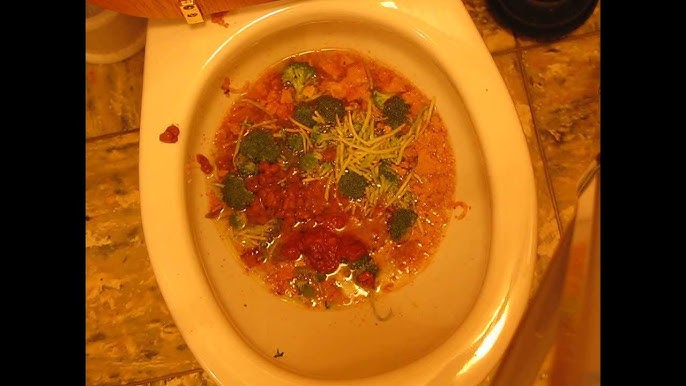Can One to Flush Food in the Toilet?
Can One to Flush Food in the Toilet?
Blog Article
What are your thoughts regarding Flushing Food Down the Toilet??

Introduction
Lots of people are commonly faced with the issue of what to do with food waste, particularly when it concerns leftovers or scraps. One typical inquiry that occurs is whether it's fine to flush food down the toilet. In this short article, we'll look into the reasons why individuals could take into consideration purging food, the consequences of doing so, and alternative techniques for appropriate disposal.
Reasons individuals may take into consideration flushing food
Absence of awareness
Some people might not understand the potential damage brought on by flushing food down the bathroom. They may wrongly think that it's a safe technique.
Benefit
Flushing food down the bathroom may seem like a fast and easy remedy to dealing with undesirable scraps, specifically when there's no neighboring trash bin available.
Laziness
In many cases, individuals might merely select to flush food out of large laziness, without taking into consideration the repercussions of their activities.
Consequences of flushing food down the bathroom
Environmental effect
Food waste that winds up in rivers can contribute to air pollution and injury marine ecological communities. In addition, the water used to purge food can stress water sources.
Plumbing problems
Flushing food can result in stopped up pipelines and drains, causing expensive pipes repairs and troubles.
Kinds of food that need to not be flushed
Coarse foods
Foods with fibrous structures such as celery or corn husks can get entangled in pipelines and cause clogs.
Starchy foods
Starchy foods like pasta and rice can take in water and swell, resulting in obstructions in pipes.
Oils and fats
Greasy foods like bacon or cooking oils must never ever be purged down the bathroom as they can solidify and cause clogs.
Appropriate disposal approaches for food waste
Using a waste disposal unit
For homes equipped with waste disposal unit, food scraps can be ground up and purged via the plumbing system. Nevertheless, not all foods appropriate for disposal in this way.
Recycling
Particular food product packaging products can be recycled, decreasing waste and lessening environmental impact.
Composting
Composting is an environmentally friendly way to take care of food waste. Organic materials can be composted and used to improve dirt for horticulture.
The value of appropriate waste administration
Minimizing environmental damage
Proper waste monitoring practices, such as composting and recycling, assistance lessen pollution and protect natural deposits for future generations.
Shielding plumbing systems
By preventing the practice of flushing food down the bathroom, home owners can stop costly plumbing repairs and keep the integrity of their pipes systems.
Conclusion
In conclusion, while it may be alluring to purge food down the bathroom for benefit, it's important to comprehend the potential consequences of this activity. By embracing appropriate waste management techniques and getting rid of food waste properly, individuals can add to healthier plumbing systems and a cleaner setting for all.
FLUSH FOOD DOWN THE TOILET?
FLUSHING FOOD CAN CAUSE BLOCKED DRAINS IN YOUR HOME
All of the plumbing fixtures in your home are connected to the same sewer pipe outside of your home. This outdoor sewer pipe is responsible for transporting all the wastewater from your home to the Council sewer mains. Even small pieces of food that go down the kitchen sink can cause problems for your sewer. It should therefore be obvious that flushing larger bits of food, such as meat, risks a clog in either the toilet itself or the sewer pipes. Flushing greasy food is even more problematic because oil coagulates when it cools, coating the interior lining of your pipes.
THE TOILET IS NOT A BIN
Food isn’t the only thing that people shouldn’t be flushing down the toilet. People use the toilet to dispose of all kinds of things such as tampons, makeup wipes, dental floss, kitty litter and even underwear. Water goes to great lengths to educate residents about the high costs and stress placed on wastewater treatment systems simply from people flushing the wrong stuff down the toilet. It costs taxpayers millions of dollars each year, and homeowners thousands in blocked drain repairs.
FLUSHING FOOD IS A WASTE OF WATER
Flushing food is a waste of our most precious resource - water. In June this year Level 1 water restrictions were introduced to protect water supply from drought conditions. Much of New South Wales continues to be affected by prolonged drought with recent figures revealing up to 97 per cent of the state remains in drought. Depending on whether you have a single or dual flush toilet, every single flush uses between five and 11 litres of water. In the current climate this is a huge amount of water to be wasting on flushing food that should be placed in the bin (or better yet, the compost).
https://www.jabplumbingsolutions.com.au/blog/can-you-flush-food-down-the-toilet

As an enthusiastic person who reads about What Can Happen If You Flush Food Down the Toilet?, I figured sharing that article post was beneficial. Liked our piece of writing? Please share it. Help others check it out. Thank you for your time. Return soon.
Call Today Report this page